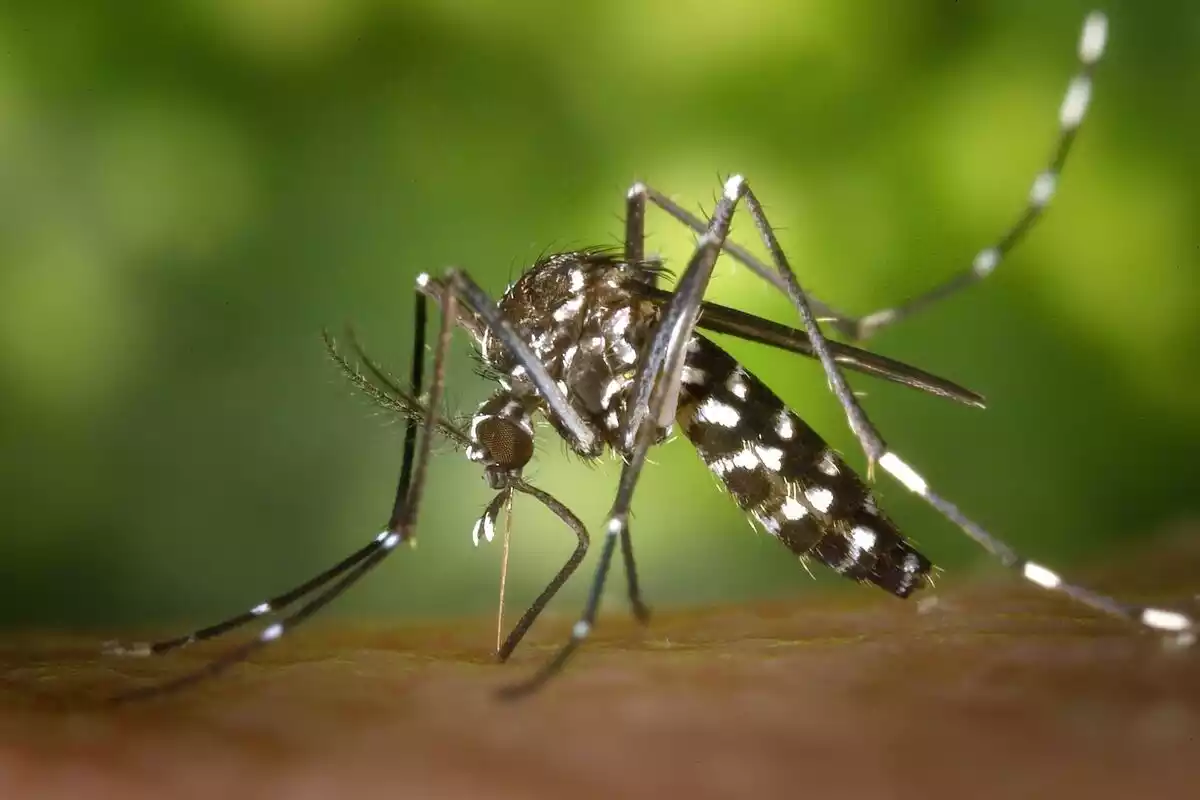In 2015, the Zika epidemic swept across North and South America. This illness that was practically unknown to the world prior to this started making the front page of magazines, and as a result, fear spread even more quickly than the virus itself.
This virus stands out mainly because of its mode of transmission (mosquito bite) and its effects on fetuses during pregnancy. However, besides this, Zika has many little-known traits. In this article, we uncover what the Zika virus is, and its symptoms, causes, and treatments.
What is Zika virus?
Zika virus, also known as Zika fever, is a contagious condition. This condition, which mainly occurs in tropical and subtropical regions, often has no symptoms- however, when they do appear, they are usually similar to those of other tropical diseases, like dengue, for example.
These symptoms may include fever, rashes, headaches, and joint pain, which last for about seven days. Although deaths have not been reported in the initial infection, it can be transmitted from mother to child during pregnancy, which can lead to microcephaly in newborns.
Zika is mainly spread through Aedes albopictus mosquito bites. However, this disease is also transmitted sexually and through mother-child contact during pregnancy in some cases. There is also a risk of transmission through blood transfusions.
Due to the high risk of transmission via mosquito bite in tropical countries, many prevention methods have been developed. Getting rid of standing water where mosquitos reproduce is one of these methods. The use of insect repellent and covering most of the body with clothing is also recommended.
The 2015 epidemic
Zika virus was detected for the first time in Africa in 1947. In spite of the multiple outbreaks that have occurred throughout history, it was not until 2016, that the World Health Organization began recognizing Zika as an "international public health emergency."
The change in attitude towards this disease was caused by the Zika outbreak that began in Brazil in 2015 and spread to most parts of South and North America, the Pacific Islands, Asia, and Africa.
Although in November of the following year, the World Health Organization announced the end of the epidemic, there were still cases reported in over 84 countries across the globe.
Symptoms
In most cases, (about 4 out of 5 infected people) never show a single sign of the Zika virus.
If they do appear, the symptoms tend to show up between 2 and 7 days after the person has been bitten by an infected mosquito. The main symptoms of the Zika virus include the following:
Mild fever
A rash
Joint or muscle pain
A headache
Conjunctivitis or red eyes
Generally, the virus takes its course without any further complications, and the symptoms usually disappear after about a week after the appearance of the first signs.

Complications and risks
Although Zika generally does not put those who catch it in danger, catching this virus during pregnancy could lead to spontaneous abortion, or microcephaly, a congenital brain abnormality, that could be life-threatening to the baby.
If it is transmitted from mother to child during pregnancy, the Zika virus could cause congenital Zika syndrome, which could lead to the following congenital disabilities:
Severe microcephaly
Brain damage and reduced brain tissue
Damage to the eyes
Joint problems and limited range of motion
Excess muscle tone
Neurological disorders like Guillain-Barre syndrome
Transmission
Generally speaking, the Zika virus is spread through the bites of infected Aedes mosquitos. These mosquitos that can be found all over the world were first identified in 1947 in the Zika Valley, located on the African continent.
When one of these mosquitos bites a carrier of the Zika virus, the pathogens that cause the virus are transmitted to the mosquito. If this mosquito then bites another person, the virus is injected into the bloodstream, and the disease is then spread.
Although it is rare, cases are spread through sexual contact, and blood transfusions have been reported.
When it comes to the sexual transmission of this condition, the Zika virus can be spread from male carriers to their partners through sexual contact. Studies have been able to isolate the virus in samples of infected semen. For the time being, the transmission of cases from women to their partners has not been detected.
Like flaviviruses, which have similar characteristics, this condition can be spread through blood transfusions. Although the risk is much lower, many countries affected by Zika have come up with strategies to detect blood donors that are carriers of the virus.
Treatment
For the time being, there is still no vaccine for the Zika virus. If someone catches this disease, treatment is focused on relieving the symptoms through rest, increasing fluid intake, and pharmaceutical therapies such as the use of paracetamol and ibuprofen.
Currently, there is no preventative antiviral treatment. For this reason, preventative measures such as proper condom an insect repellant use, and reducing the number of possible mosquito habitats are the best ways to keep this virus at bay.
References
Chen, L. H. & Hamer, D., H. (2016). Zika Virus: Rapid Spread in the Western Hemisphere. Annals of Internal Medicine, 164(9): 613–615.
Li, H., Saucedo-Cuevas, L., Shresta, S. & Gleeson, J. G. (2016). The Neurobiology of Zika Virus. Neuron, 92(5): 949–958.
Rasmussen, S. A., Jamieson, D. J., Honein, M. A. & Petersen, L. R. (2016). Zika Virus and Birth Defects — Reviewing the Evidence for Causality. New England Journal of Medicine, 374(20): 1981–1987.
Waggoner, J. J. & Pinsky, B. A. (2016). Zika Virus: Diagnostics for an Emerging Pandemic Threat. Journal of Clinical Microbiology, 54(4): 279–316.
